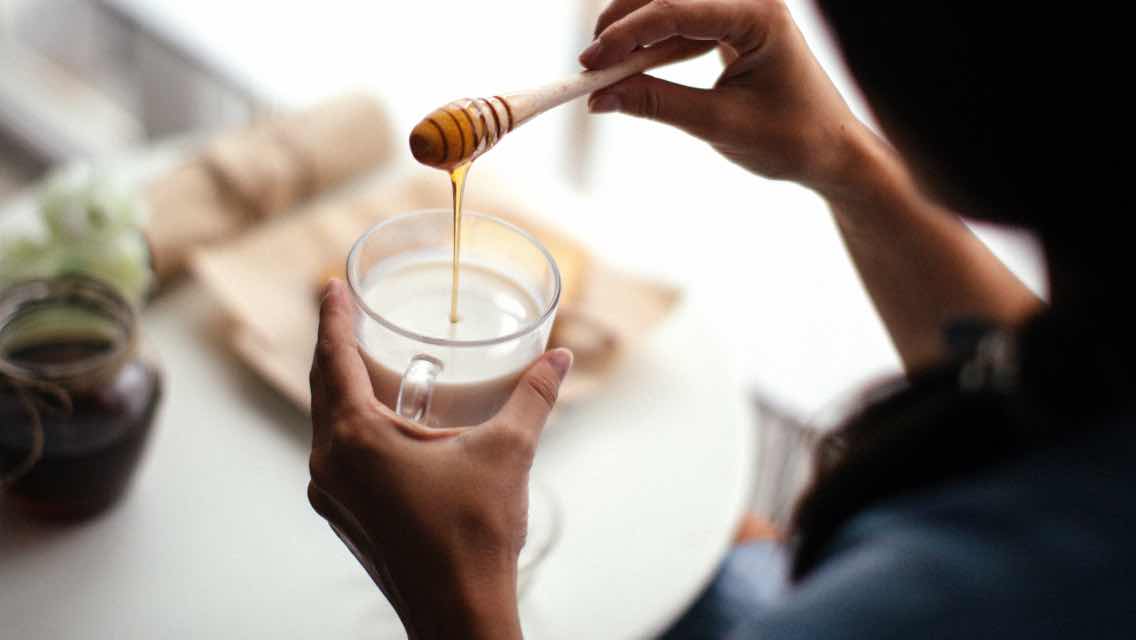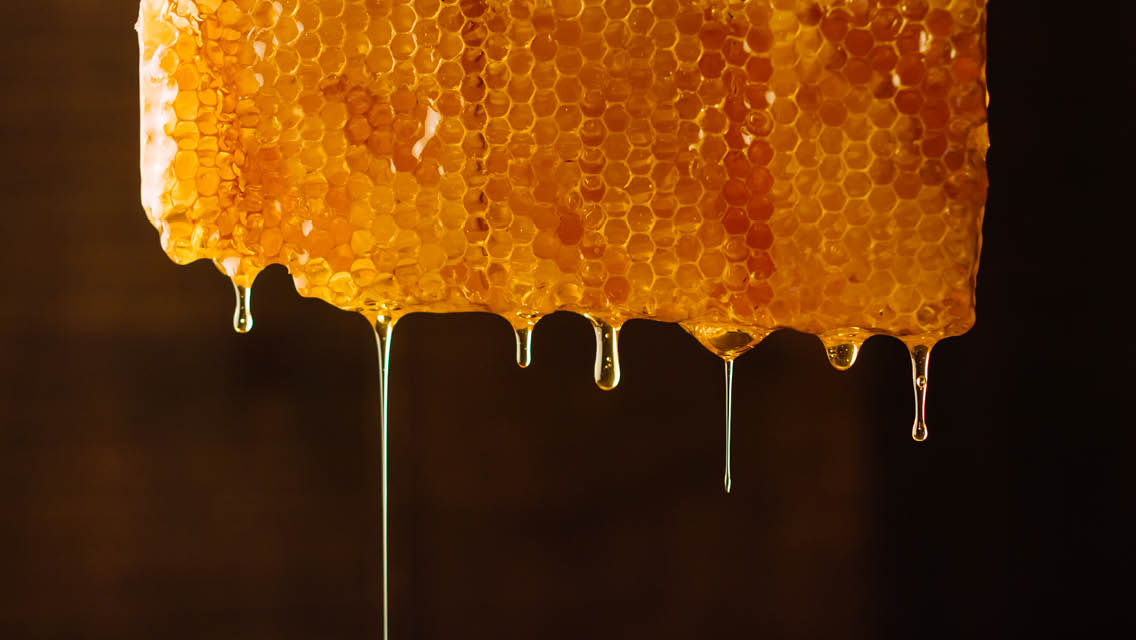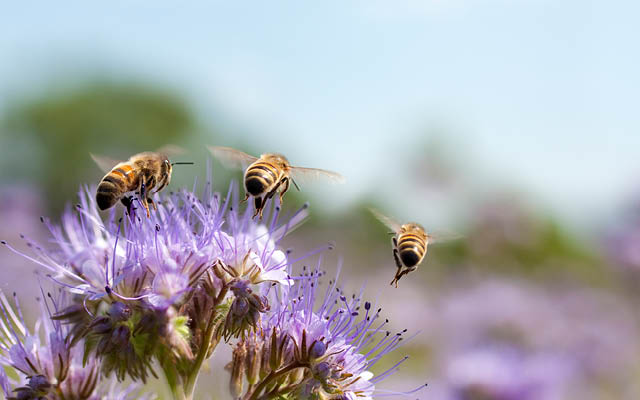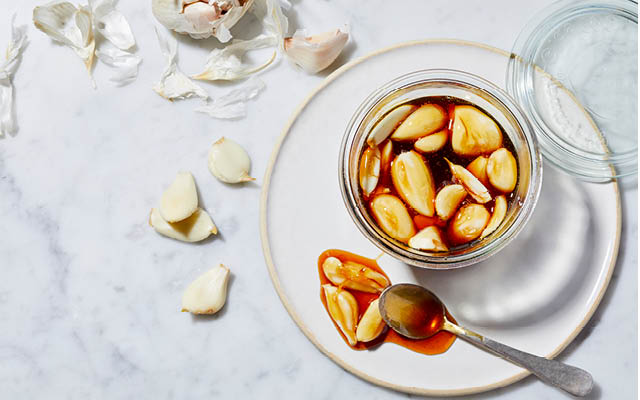I grew up in New York City — in, it seems to me now, a TV room. This was attached by sidewalk to various bits of public transit, grocery stores both big (Pathmark) and small (we called them bodegas), and restaurants.
Honey, to me, was an ingredient indistinguishable from all the world’s many ingredients: There was honey and lemon in your tea when you had a sore throat, honey in the baklava at the Greek diner, and . . . and I’m struggling to name a third use of honey in my childhood. It was in no way more extraordinary in my mind than wasabi, saffron, cardamom, or any of the dozens of things one ate now and then, though not too often.
I was a fourth-generation New Yorker, able to navigate a dozen paths crosstown in the event of a water-main break, but ignorant of all I was ignorant of, as all people are.
Then I moved to Minnesota for college, where I learned what was in the great outdoors. Trees. Birds. Farms. I learned to appreciate the better meats and cheeses.
Yet my real eureka moment came when I was invited to see a lovingly restored prairie, not too far from the shores of the Mississippi River.
Giant bees the size of my thumb buzzed by, with a low-throbbing music like a motorboat. Little metallic-green bees flashed like glitter in the air. Honeybees busily worked the flowers while dragonflies patrolled the skies. Every square foot was a carnival of inexpressible zinging, flying movement.
My host said some important things about soil health, but I only caught a portion of it because my jaw was on the ground: This was life? This was nature? It was as if I had lived my whole life in black and white and suddenly could see the world in color.
I had never even begun to imagine such a diversity of bees, such an explosion of life. How many bees are there, anyway?
The answer: fewer than there have ever been in modern America.
“There used to be 5 million hives in America after World War II,” says Brian Fredericksen, a resolutely local beekeeper and owner of Ames Farm Honey, near Minneapolis. “Now we’re down to half of that.”
With the decline of local bees comes the decline in quality of the average supermarket honey. I suspect that a good part of the reason for this is that more Americans are growing up like I did: in a world of innumerable screens, where we leave those screens to visit various retail destinations where saffron and wasabi and honey are just interesting words that differentiate protein bowls.
Yet here’s what honey really is: a little-appreciated miracle.
How Honey Is Made
Many wild species of bees make honey to feed their young as well as themselves in times of famine. Yet only the honeybee, Apis mellifera, lives in big enough groups to make honey in quantities that humans find useful.
Before the advent of beekeeping, honeybees built their hives in the hollows of trees. Modern beekeeping involves creating spaces where honeybees can live and make honey outside of trees.
When bees made too much honey in the wild, the surplus would inspire a swarm. A good portion of the colony would then buzz off to start a new one. In a beekeeper’s hive, surplus honey is removed and sold, and the bees stay and keep working.
From a bee’s perspective, honey is made and used as follows: Plants that want to make more plants require pollination. This involves an exchange of pollen within their own species, which is achieved by the action of wind (how corn and lawn grass do it), or by pollinators that carry plant pollen around directly.
To lure these pollinators, plants offer nectar. Some (such as roses) publicize their stock by setting up a big, showy billboard; others (like willow) simply produce so much that pollinators can smell it. Honeybees, and all pollinators, come to get this nectar, which is their food.
In the case of honeybees, they use their proboscis to suck nectar into a discrete pouch. “That’s their chemistry lab,” Fredericksen explains. “They add enzymes and other things.”
Scientists have identified 180 compounds in the final product we call honey, ranging from antioxidants to the obvious sugars.
You’ll sometimes hear people describe honey as bee vomit — but this is far from the truth. Bee anatomy is different from human anatomy: They have stomachs and nectar pouches, and these are separate. Older bees fill their nectar pouches with nectar from the flowers and then bring it back to the hive, where they either eat the nectar or feed it to other bees.
Typically, the bees in the hive will pass the nectar from mouth to mouth (which is really pouch to pouch), where their digestive enzymes break down the sugars and prevent crystallization. This process also helps to dry it out to 18 percent moisture content or less, so that it can be stored as honey.
In addition to nectar, bees also forage a resinous material from tree sap that they form into an antiviral, antibacterial, antifungal protective material called propolis, with which they line their hives. (Dissolved in an alcohol tincture, propolis is used by humans to treat minor burns and cleanse wounds.) Honeybees also collect some pollen, which they eat at various periods during their life cycles.
And honey isn’t the only thing honeybees make from nectar. Sometimes they add certain enzymes to create royal jelly, which they feed to their newborn bee larvae.
The Life Cycles of Bees
There are a variety of life cycles happening inside a beehive. First, the queen bee lays an egg in one of those wax cells you’re familiar with if you’ve ever seen a honeycomb. That egg hatches into a wriggly larva, and bees feed it royal jelly. Feed a newborn bee-larva a little royal jelly and you get a healthy bee; feed it a lot and you get a queen.
Next, honeybee larvae seal themselves into their wax cells, just as a caterpillar enters a pupal stage. There they transform. When they’re done, they chew their way out and live their next 10 days as baby bees, eating nectar and honey inside the hive and tending to new larvae. Then they graduate to life as foragers and spend the following 30 days or so collecting nectar, resinous sap, and pollen.
At the end of that stage, they die of exhaustion. “They get old. You’ll see their wings are all beat up, they look exhausted,” says Fredericksen.
“What people don’t understand is that honeybees are a superorganism: At all times they’re doing something for the whole, for all of them,” he explains.
In addition to their incredible work ethic, honeybees are remarkably cooperative. “What people don’t understand is that honeybees are a superorganism: At all times they’re doing something for the whole, for all of them,” he explains.
“They’re collecting food, they’re feeding larvae, they’re defending the hive. Take out one bee or 10 bees and they can’t do anything — they’d die. Bees need a workforce, and they need all of them. It’s too bad humans haven’t learned that.”
When the bees start their season in spring, they eat all the nectar they collect. As the season progresses, they start putting away honey, just as you might fill your cupboards with canned vegetables from the garden in the fall. When times are lean, they eat their stored honey.
10 Ways Real Honey Supports Your Health
Let’s say you have a space with thousands of individuals coming and going, all day long, and no handwashing sinks. The space is warm because it’s so full of bodies. The space is full of food, but there’s no refrigeration. To make matters worse, the space is full of babies. What would you say are the risks in that environment?
Obviously enough, the risks are everything — germs, bacteria, viruses, fungi, diseases, spoilage. You couldn’t design a riskier environment. And this is exactly why I say honey is a miracle: For a hundred million years, bees have been evolving different tricks, many still little understood, to make honey into much more than a sweetener.
Let me dazzle you with the results of several recent studies proving its multifarious powers:
- Buckwheat honey is more effective than a common over-the-counter cough syrup in relieving nighttime coughing in children over age 1 and helping them sleep through the night.
- Honey helps burns heal faster than a number of standard dressings.
- Manuka honey (made from the manuka bush in Australia and New Zealand) reduces pathogenic gut bacteria like H. pylori, making it protective against stomach ulcers.
- Manuka honey can prevent antibiotic-resistant bacteria from infecting wounds.
- Manuka honey is as effective as mouthwash in reducing dental plaque.
- Honey may reduce tissue injury in children over age 1 who swallow button batteries (until the batteries can be extracted).
- Honey may prevent mucositis in patients undergoing radiation treatment for head and neck cancers.
- Honey reduces the risk factors for atherosclerosis.
- Tualang honey (made in tualang trees in Malaysia) lowers the risk of heart attack in animal studies.
- Honey improves cardiovascular health generally.
I could do this all day.
One caveat: There’s not much incentive for drug companies to conduct expensive human-health studies of honey because, of course, no one can patent honey and then profit from it as a pharmaceutical.
This is one reason you’ll often find honey studies focusing on a small, regional honey, and paid for by a local government. Manuka honey, for instance, is made by honeybees gathering nectar from the manuka bush — which is related to that antibacterial wonderplant, the tea tree — in New Zealand and Australia.
Manuka really does seem to have remarkable antibacterial properties. As for whether that justifies its exorbitant price, that’s between you and your bank account.
Honey vs. Sugars
Now, I feel like I can hear some people saying: “But if life has taught me anything this past decade, it’s that a sweetener is a sweetener. A cake — whether it’s gluten-free and made with maple sugar, paleo and made with coconut sugar, or ancient Egyptian and made with honey — is still a cake.”
Certainly. If you eat a hundred cakes a day you will have a hundred problems. But if you never eat cake again you will also have problems. Somewhere between those two poles lies a good life.
Greg Plotnikoff, MD, who worked for decades in second-opinion primary care, now consults on some of the world’s most difficult medical cases. At his Minneapolis clinic, he hosts quarterly “happiness hours” to bring the local community together to talk about various topics, including a recent one on honey.
“When it comes to sweeteners, what are your choices?” Plotnikoff asks. “Stevia, aspartame, regular sugar — if you’re choosing between those, honey probably makes the most sense.”
“When it comes to sweeteners, what are your choices?” Plotnikoff asks. “Stevia, aspartame, regular sugar — if you’re choosing between those, honey probably makes the most sense. My bias is against the artificial sweeteners, because they trick the body.
“A lot of data now suggests that the more artificial sweeteners one uses, the higher the risk of type 2 diabetes. The theory is the sweet taste triggers the pancreas to release insulin, and insulin floating around the body puts up resistance to it, to keep homeostasis and prevent blood sugar from going too low.”
Honey, by contrast, contains plant flavonoids — quercetin and lutenin — that are natural regulators of mast cells. They act as the guard dogs of our immune systems, defending against pathogens. “When I think about honey being used to soothe sore throats and I think about the antibacterial properties in honey, that makes sense,” Plotnikoff says.
If we avoid honey because of its sugars, he explains, we also miss out on its benefits. And that’s not all.
“When you make the case for honey,” he says, “you’re really making a logical case for us to consider many things.” Many things such as: If bees pollinate a third of all the things we eat, like apples and almonds, zucchini and cashews, oranges and chocolate — what do we owe them? Do we owe them the responsibility of seeing them, knowing about them, and supporting good beekeepers?
I think we do. So does Plotnikoff. “We owe ourselves to think about honey as more than just another sugar bowl,” he says.
The Sweet Life
When you’re deciding what to eat and what to avoid, Plotnikoff emphasizes that there’s a big difference between nutrition and nourishment.
“Meals are nourishing, because they’re connected, they’re engaged, they’re connected to nature and the world,” he explains. “If you step outside to harvest your salad, that’s nourishing in many ways beyond nutrition. Honey from a farmers’ market, where you can connect with the family tending the bees and have this human connection? That’s nourishing. But if you trust a factory with your choices, is that nourishing? I’d argue no.”
There are many reasons it’s important to feel a connection to what we eat, Plotnikoff adds. “I see more people in my practice suffering from disconnectedness. We’re disconnected from each other, we’re disconnected from nature.”
If no one is taking the time to find good local honey, or to appreciate the astonishment that is honeybees, who will support the wild spaces where honeybees create a sweet, sticky, everyday miracle?
Perhaps meeting a family that tends bees can be one step toward greater connection. “We change the culture, and our health, one choice at a time. Honey is really that link to many of today’s important themes. La dolce vita, right?”
Yes. I agree. Not only is honey one of today’s important themes, it’s one of the everyday miracles, like the ocean and the stars, that we’re better off appreciating.
Of course, if no one is taking the time to find good local honey, or to appreciate the astonishment that is honeybees, who will support the wild spaces where honeybees create a sweet, sticky, everyday miracle?
It has to be us. We need to work to ensure there are still grasslands and flowers and plants for bees to pollinate and make the honey that improves our world in countless ways. The rewards will be sweet.
How to Find Real Honey
Honey is one of the few foods that connect us to a whole natural world: the trees, the wetland flowers, and the clover. But only if we’re wise enough to find it.
A lot of honey is repacked. Many companies buy it from producers in Argentina or China, or from a shell company in Laos, to avoid tariffs. They then repack it for sale in America with pretty pictures on the labels.
Honey is routinely found to be one of the most adulterated ingredients in the American food supply.
Honey is routinely found to be one of the most adulterated ingredients in the American food supply; in many cases, it’s diluted with rice syrup. This systemic fraud distorts the market and is one of the reasons the 2018 American honey crop was the smallest since record-keeping began.
“People want to hear about colony collapse disorder and sexy things like that, but it’s not about that,” says Brian Fredericksen, owner of Ames Farm Honey, near Minneapolis. “It’s about consumers who really don’t know anything about honey — and then it’s about wild forage, which is decreasing every year.”
But you are a consumer who knows some things! These tips will help you find the best honey.
Keep It Local
The best honeys generally come from identifiable beekeepers, not big corporations. “If you can’t find a phone number on your honey for a beekeeper you can call, or see pictures of their beekeeping practices on Instagram, assume it’s repacked,” warns Fredericksen. That means if there’s a honey table at your farmers’ market, head there. If there’s a sign selling local honey on the side of the road, pull over. And barring that, when you hit the grocery store, seek out honey that’s made in your state.
Go Raw
Raw honey contains beneficial enzymes that are killed when honey is filtered and heated. Look for honey that’s marked “raw” and has a cloudy appearance.
Seek Out Single-Source
Single-source honeys are harder to find but worth the effort. They have the unique flavor of the flower, like dandelion or clover, that was in season when the bees were foraging. “Beekeepers blend most of their honey into one big tank,” explains Fredericksen, but single-source producers “spend a crazy amount of effort extracting honey from each hive one at a time.”
This article originally appeared as “Dear Honey” in the June 2020 issue of Experience Life.




This Post Has 0 Comments